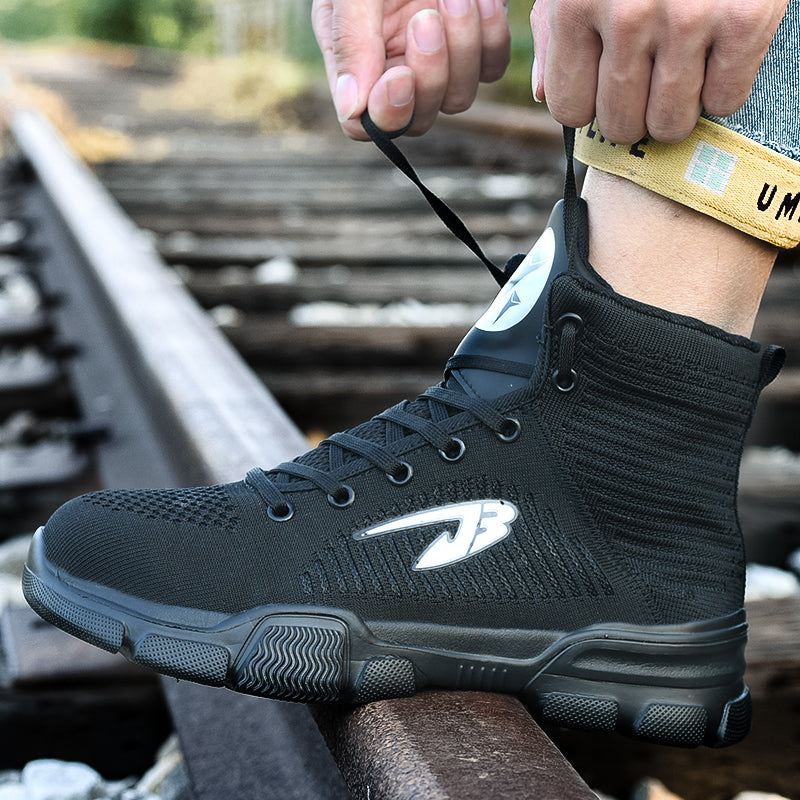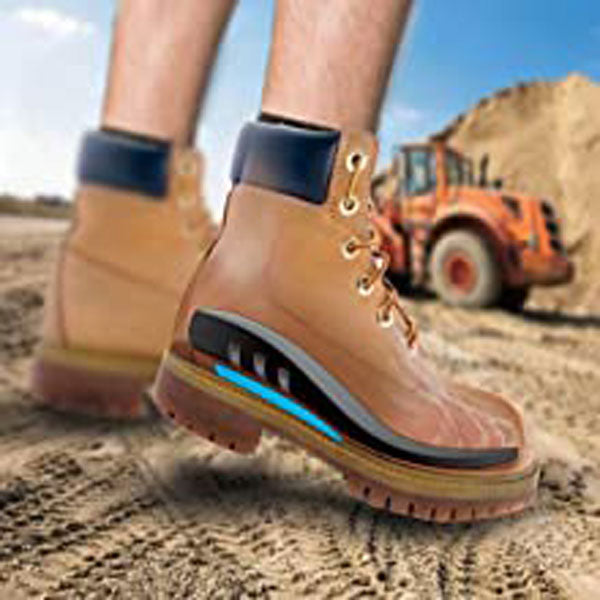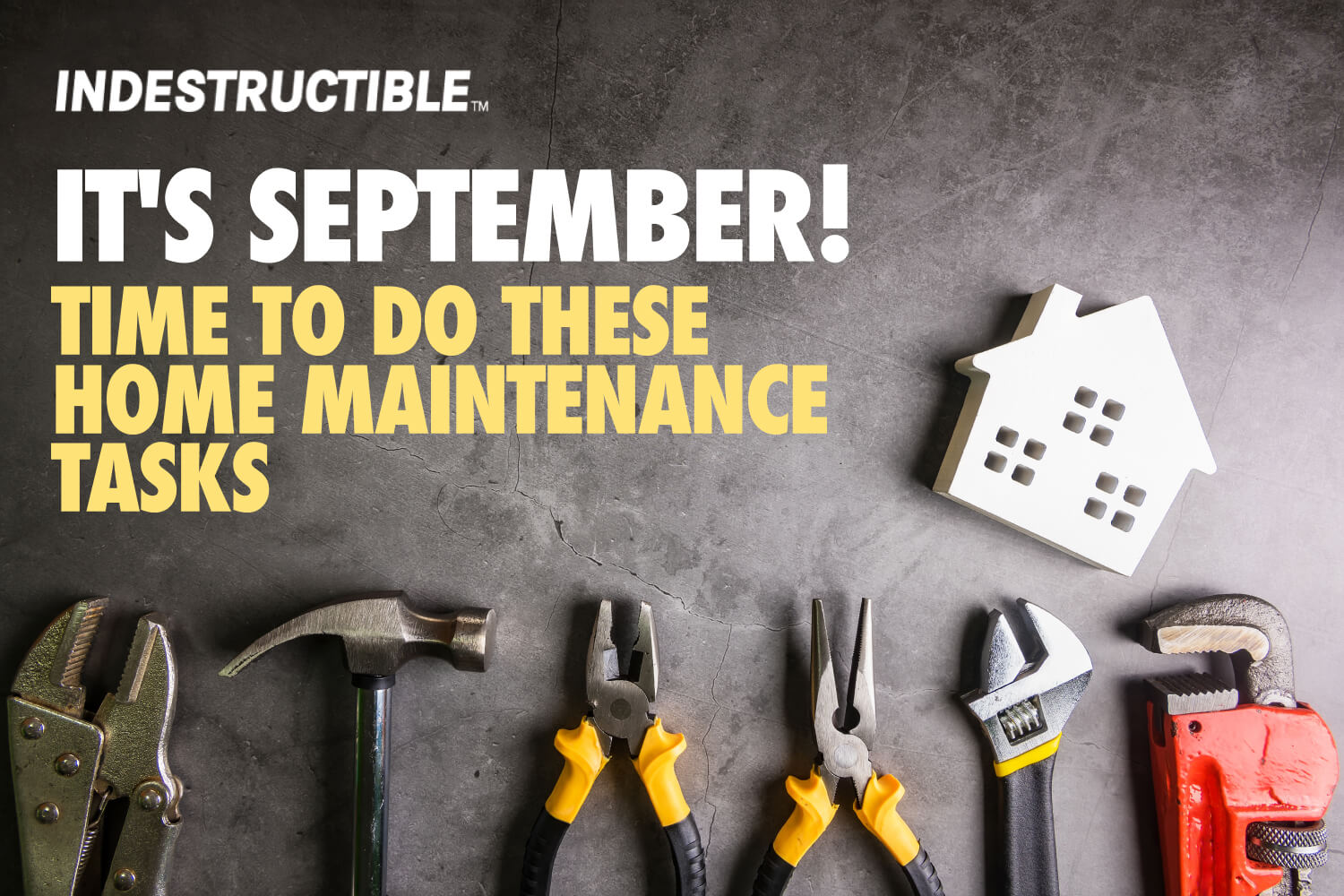Not long now, you’ll feel the cold months moving in unless you’re in the North and getting some of it already. It’s time to think about getting ready for October weather with these tips.
We’ve come up with seven areas you should look at between now and the end of the month. You’ll avoid more significant issues and get things ready before that frigid air hits.
Area 1:
Create safe walkways for winter.

With snow comes ice and slippery conditions. Check your paved patios, sidewalks, and other stone walkway areas for cracks and broken pavers.
Small cracks:repair with simple epoxy.
Large cracks: call in the pros.
Clean up fallen leaves around your walkways, drives, and patios. Wet slippery leaves are a hazard for pedestrians.
Did you know that burning leaves produces dangerous, cancer-causing chemicals? It's suggested that you don't dispose of leaves by burning them for this reason. Many communities have a fall leaf pickup or drop-off day in the fall. Check to see what your local bylaws require for raking and disposing of leaves.
If you're rural and feel you must burn leaves, follow these safety rules:
- Wear a protective mask.
- Only burn far from houses and other structures on your own property.
- Never burn leaves in windy conditions.
Stock up on tools for winter sidewalk maintenance:
- Snowblower, if you have a large driveway or area to clear.
- Snow shovels.
- Deicing material to keep the sidewalks, porches, and steps safely cleared of ice.
Area 2:
September siding maintenance.

Long and hot summer months can affect your home's exterior. Now is the time to make sure it's in tip-top shape for winter and that your home looks its best.
Check every panel for signs of damage or missing parts. Pay close attention to the corners of your house. Any damaged panel can expose your home to the elements and allow deterioration to settle in.
Tip:Instead of resorting to a ladder and risking injury, use the camera feature on your phone to zoom in on areas further away from you.
Repair any damaged areas immediately. Don't wait until after winter, or you risk more damage occurring. If ice or water finds an entry, this poses a serious threat to the rest of your home.
Fall is one of the best times for changing your siding. If you want to freshen up your home or give it a new look altogether, do not paint vinyl siding. Vinyl siding expands and contracts with temperature changes, so your paint will only crack and peel, making your home look unenticing.
Clean your siding. Giving your home a power washing during the fall helps keep it looking nice and helps your siding last longer. Follow the instructions for your siding type or hire a professional.
Avoid using harsh chemicals. Harsh cleaners, such as those that contain bleach, may degrade your siding. A mixture of warm water with soap or a little bit of vinegar is effective at cleaning vinyl siding without any of the dangerous ingredients.
Trim any hedges and plants near your siding. They likely grew out during the summer months, which may risk exposing your siding to them. Leave a foot or more space between the branches or leaves and your house.
Finally, practice good siding maintenance by preparing your gutters for winter. Shore them up and repair any broken or leaking gutters.
Area 3:
Fall plumbing maintenance.

Go through each room of your house that has plumbing in it and inspect all faucets and fixtures or appliances that use water. Fix any leaks you find. Look for gaps or discoloration in the grout. Make sure all drains and pipes are clear.
Clean your washing machine by running an empty cycle with vinegar through it. Check all hoses and make sure it's operating correctly.
Inspect your outdoor water faucets for any leaks. Disconnect your outdoor water hose once you're done getting the outside ready for colder months.
If you have a sump pump, pour a bucket of water on it and check to see that it turns on to pump the water out properly. Call a professional if you see or suspect that it's not working as it should.
Area 4:
Fall Window Maintenance.

Clean your windows, taking time to inspect wooden frames for any swelling, rotting, or warping. Check for cracks or peeling paint. Don't forget to check the hardware parts and make sure they're in good condition.
Key reasons for cleaning your windows:
- Debris builds up around your windows, giving them an unsightly appearance, but this also degrades the glass.
- Making window cleaning part of your exterior home cleaning routine adds to your home's curb appeal.
- Windows exposed to dirt and elements are likely to develop mold and compromise indoor air quality.
- Cleaning improves heating efficiency by allowing your windows to take advantage of the sun's natural heat.
- Cleaning your windows provides you with a more enjoyable view during the winter months.
Window cleaning tips:
- Use a brush or vacuum cleaner to remove loose dust and dirt from frames, glass, tracks, and sills.
- Use a mild cleaning solution with a soft, non-abrasive rag for frames, sashes, and grilles.
- Clean dust and grime off the window glass with a dry, soft cloth, then clean with a mild cleaner and a lint-free cloth by wiping in a circular motion.
- Don't use newspapers to clean your windows, as the ink can transfer to the surface and cause discoloration.
- Avoid cleaning windows in direct sunlight as that may leave residue or water spots on the glass.
If your window doesn't come already insulated, surround the window with a seal of weatherstripping. If you already have weatherstripping installed, check to make sure it is solid and there are no air leaks that need repairing.
Replace your windows if you notice it's letting too much air through, if the windows are cracked, or if the frames are severely damaged.
Area 5:
Get the fireplace ready and establish winter fire safety.

Sweep the chimney and make sure your fire screen is ready to go. If you don't have a fire screen, get one. It's a simple safety feature that will keep sparks from flying outward into your room while it's in use.
Go over fireplace safety rules with your kids. Make sure everyone understands to make sure the fire is completely out before going to bed at night.
If you use space heaters, make sure your space is as safe as possible. Allow at least 3 feet of empty area around your space heaters. Read the instructions before using it and follow their safety protocols. If it requires venting, make sure the venting is secure and goes outside.
Important safety tip: Never use the stove or oven to heat your home.
While you're getting your fireplace and space heaters ready, change your smoke alarm batteries for the season and check your fire extinguishers.
Does your family tend to use candles when fireplace season hits? Check that all the places you use candles are set up for safe and proper candle use.
Area 6:
Prepare your furnace for winter.

It's a good idea to call your HVAC professional to service your furnace this month. Make sure everything is in working order, the system is clean, and there are no leaks. You can help improve your indoor air quality by having ducts cleaned. You should also take a shop vac to your room vents and make sure they're clear of debris.
While you're getting your furnace ready for winter, this is a good time to have them hose out your outdoor dryer vent. You'd be surprised how much debris from your machine gets stuck in the exhaust tubing.
Area 7:
Get the fall yard cleanup done and then service the equipment.

The end of September signals the end of lawn mowing season in many areas. When the grass turns brown, and growth slows, it doesn't mean it's died. It's just going dormant. You want to avoid mowing it too short once its growth rate slows down. Two inches is a good height to aim for in the fall.
Once your lawn has gone dormant, it's time to prepare your lawn mower for winter. Drain the fuel so it won't go bad and prevent the mower from starting after it sits through the winter, or add a fuel stabilizer.
Clean the mower deck, sharpen the blades, check the spark plug, and lubricate the pivot points.
Do the same to the trimmers and any other lawn equipment you keep on hand.
Store your lawn equipment where water won't get in and rust it out during a repeated cycle of freezing and thawing. Garages are the best storage options, but sheds or yard storage containers work too. If you don't have any of those, a good tarp can work, although the elements can still get to your equipment.
Enjoy The Fall Weather
Maintaining your home and yard will help you and your family look forward to autumn and appreciate its beauty. Take advantage of the nice weather you have left to lower the risks of winter season hazards coming soon with these simple steps.

Jet Indestructible Shoes
Stay safe during fall chores with these all-in-one shoes blending comfort, style, and protection at home, work, and play.








